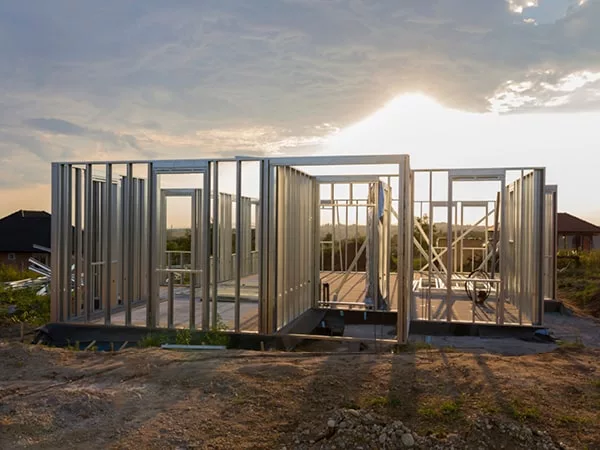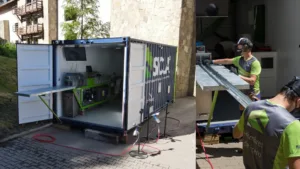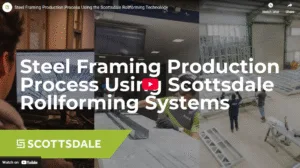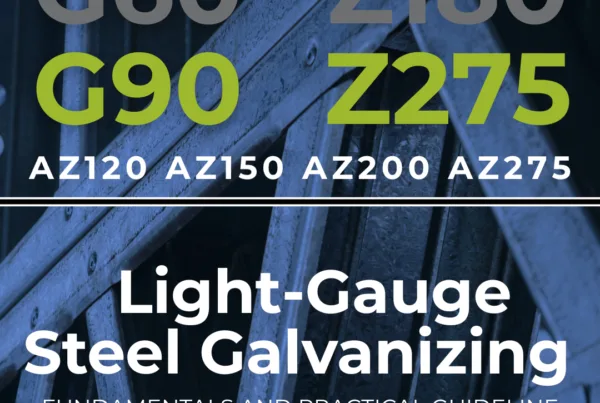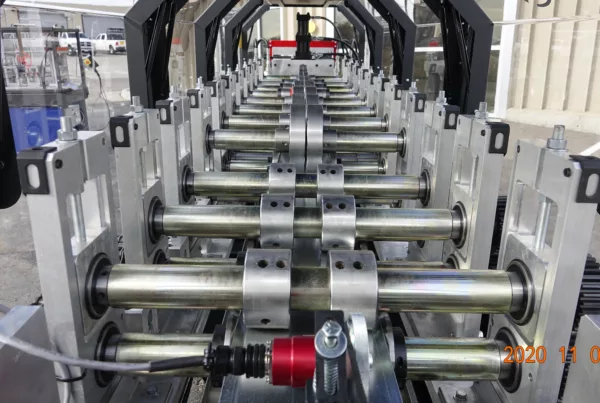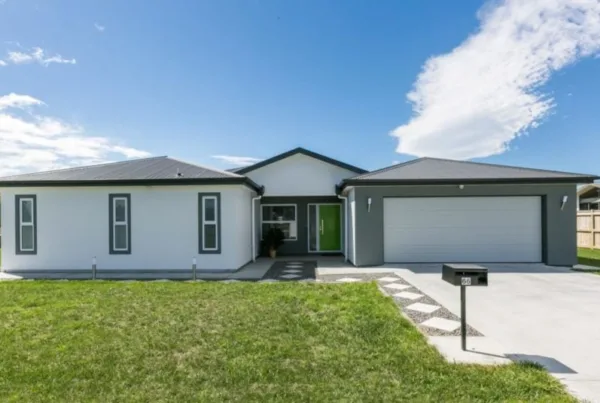The construction industry is rapidly evolving with new technologies like 3D printing homes, virtual reality, advanced roll forming machines, prefabrication, and other innovations. While most 3D printing homes today rely on a material mix of concrete and sand, another material offers superior strength, sustainability, and flexibility: cold-formed steel. When combined with steel framing machines and modern roll forming machines, this approach creates the closest process we have to truly 3D printing structures. Unlike buying stock members, roll forming steel framing ensures every cold-formed steel component is custom-made for precision, resilience, and efficiency.
Why Roll Forming Steel Framing Mirrors 3D Printing Homes
3D printing homes is about precision, automation, saving time, and reducing waste. Steel framing achieves the same goals when produced with advanced roll forming machines. These steel framing machines are CAD-driven, meaning once a design is finalized, each cold-formed steel member is fabricated to its exact specifications. The result is a building system where components fit together seamlessly, almost like assembling Lego blocks.
Modern roll forming machines handle every detail: dimpling for connection locations, service holes, inkjet labeling, web notching, plumbing hole punches, cutting studs, reversing lips, and more. By integrating all modifications into the production line, the final member is ready for assembly the moment it exits the roll forming machine. Supported by intelligent software like ScotRF, each part is tracked, identified, and directed to its precise place in the structure. This is why roll forming steel framing is often compared to 3D printing homes; it’s automated, precise, and repeatable.
How Steel Framing Outperforms Other Building Materials
While concrete currently dominates the 3D printing homes discussion, steel framing provides unmatched advantages. Cold-formed steel is lighter than concrete, yet stronger and more resilient, and doesn’t crack. Unlike wood, it is non-combustible, resistant to termites, and dimensionally stable. When fabricated with roll forming machines, each member achieves a tolerance and consistency that traditional materials simply cannot match.
Waste reduction is another major advantage of steel framing. With steel framing machines, material waste is reduced to approximately 1%. Every cold-formed steel coil is transformed into exact members with no unnecessary offcuts. Since steel is also 100% recyclable, roll forming steel framing creates one of the most sustainable building systems available today.
3D printing homes with concrete mixtures faces several challenges that limit scalability and long-term performance. Concrete must be specially formulated to flow smoothly and consistently through the printer nozzle while setting quickly enough to support additional layers, which requires costly additives and precise control. Maintaining consistent quality in large prints is difficult, as issues like cracking, shrinkage, and weak bonding between layers can compromise structural integrity.
Reinforcement remains another hurdle since traditional steel rebar is hard to integrate with printed layers, raising concerns about load-bearing capacity and seismic performance. Additionally, large-format printers are expensive, difficult to transport, and require highly skilled operators, while curing times, weather conditions, and site preparation add further complexity. Collectively, these technical, logistical, and economic barriers slow the widespread adoption of 3D-printed concrete homes.
In contrast, roll forming steel framing overcomes these issues by offering built-in resilience, design flexibility, and proven long-term durability, making it a more practical and scalable solution for modern construction.
Speed of Fabrication and Assembly in Steel Framing
One of the key reasons roll forming steel framing is considered the closest to 3D printing homes is speed. Depending on the size of the project, fabrication and assembly can be incredibly fast. Customers using steel framing machines report fabricating and assembling tiny homes within less than a single day. A standard two- or three-bedroom home can often be fabricated in one day and fully assembled by just two or three workers the next day.
This efficiency is possible because roll forming machines fabricate cold-formed steel members with every hole, notch, and cut in place. The assembly process is guided by digital models, ensuring that every member is installed exactly where intended. The combination of design precision, automated fabrication, and guided assembly mirrors the promise of 3D printing homes, but with the strength and reliability of cold-formed steel material.
Learn more about steel framing fabrication process using advanced roll forming technologies by viewing our video below.
The Future of 3D Printing Homes with Cold-Formed Steel
Looking ahead, the integration of roll forming machines and digital design software points toward a construction future that looks very much like 3D printing homes. Instead of extruding layers of concrete, builders use steel framing machines to fabricate cold-formed steel components that can be quickly assembled into strong, efficient, and sustainable structures.
From tiny homes to multi-story commercial projects and beyond, the scalability of roll forming steel framing far surpasses other building methods. While 3D printing homes with concrete is limited by curing time, machine size, and more, steel framing powered by roll forming machines can be deployed anywhere, urban projects, remote builds, disaster relief, or modular construction.
3D Printing with Roll Forming Steel Framing Machines
In today’s era of construction innovation, 3D printing homes captures the imagination, but roll forming steel framing delivers reality. By using cold-formed steel, advanced steel framing machines, and digital workflows, builders can achieve speed, strength, and sustainability unmatched by traditional building materials. Whether for tiny homes or large-scale projects, roll forming machines offer the closest, safest, and most reliable solution to 3D printing buildings today.
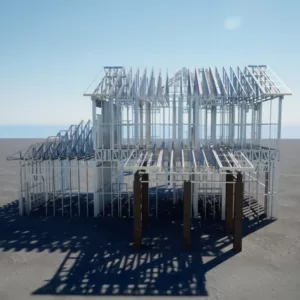
Additional Scottsdale Roll Forming Solutions and Resources
- Blog – Steel Homes: An Affordable Solution to the Housing Crisis
- Blog – Innovative Disruptors in Modular Construction with Roll Forming Technology
- Blog – How to Launch a Successful Steel Framing Business
- Blog – Power Source Options in Advanced Roll Forming Technology
- Blog – 5 Greta Reasons to Use Cold-Formed Steel in Modular Construction
- Blog – Light-Guage Steel is Redefining Housing in a Time of Need
- Blog – Steel Frame House: A Complete Guide to Best Engineering Practices
- Financial Services
To learn more about Scottsdale’s roll forming solutions and steel framing ecosystem, visit us at www.scottsdalesteelframes.com, call us at +1 (888) 406-2080, or email us at rollformers@scottsdalesteelframes.info.
